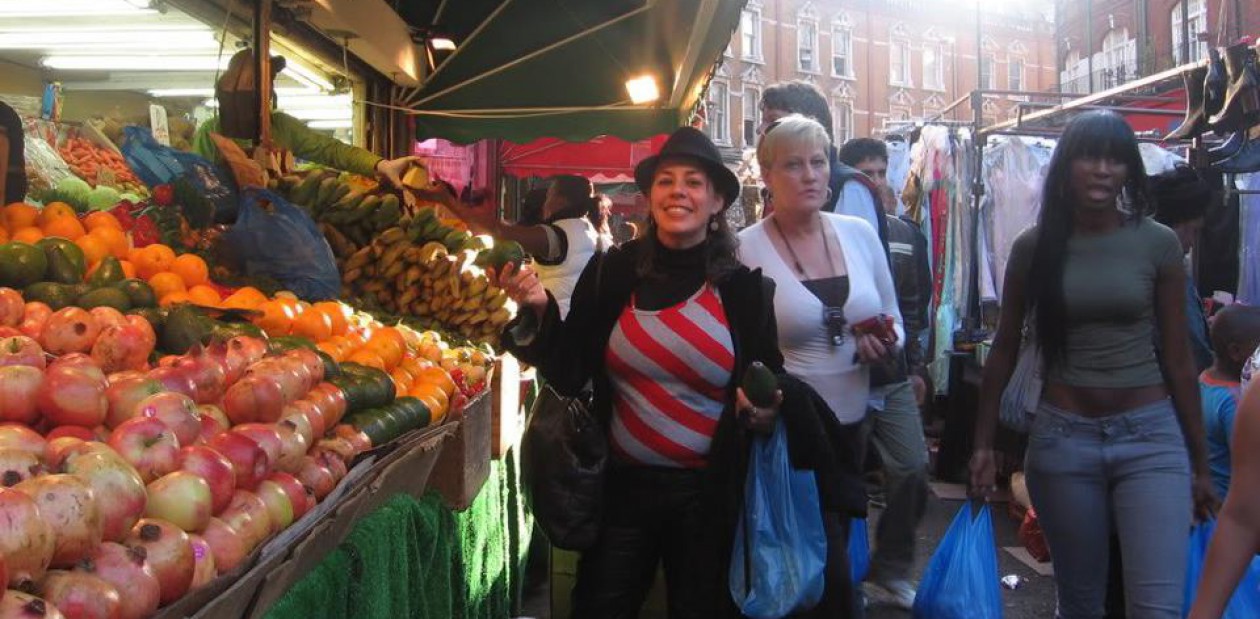Flamenco is part of the culture of Spain, but it's origins is only select to one region, Andalusia. The cities in Andalucia are Sevilla, Granada, Cordoba,Jerez, and Malaga,and reflect the great Moorish influence,since historically Moors ruled from the 7th to 11th century. What makes flamenco interesting is the influence of other dance forms that have helped to create it. The earliest settlers in Andalusia came not only from the Middle East,North Africa and Persia,but from the Punjab region of India,Rajasthan. We call them the gypsies. Flamenco is an amalgamation of all cultures. It has drawn its inspiration from Greek, Roman, Indian, Moorish and Jewish cultures.
Flamenco was born from the frustration and heart aches of the oppressed peple in Spain: the Jews, gypsies,and Moors. Since the time of the Spanish Iniquisition, the Jews, Moors and Gypsies were treated as outsiders, often persecuted disdained and hated by the Spanish people. Flamenco was born from this, as a spirtual outlet very much like gospel was born from the opression of the American slaves.Often whole families would gather impromptu in their neighborhoods to sing,dance and entertain for their community.It was not until later that flamenco became an accepted artform. It took a long time for flamenco to become accepted as an artform in Spain. It was not until non-gyspies performed it in cafes and theaters that it became popular. It has been since,commercialized and now has many schools that train to dancers to be full fledged flamenco dancers, combining thier training with ballet.
Flamenco and Gypsies
Until the late eighteenth and nineteenth century, Flamenco dance, music and song was widely considered to belong to the Gypsies, whose customs, beliefs and way of life were disdained and even hated by Spanish society. During and for centuries after the famous expulsion of the Moors and Jews in 1492, the Gypsies were tortured, persecuted and even killed if they would not conform to the accepted standard of Spanish society. Nomadic by nature, many of the Gypsies never settled in one town for very long; they would stay in one location only as long as they were able to make money doing odd jobs, selling their wares, and many of them performing Flamenco for the curious Spaniards.
Expulsion of the Gypsies in Spain
Famenco, a tri-art:The traditional view is that flamenco was originally unaccompanied singing (cante). Later, the songs were accompanied by flamenco guitar (toque), rhythmic hand clapping (palmas), rhythmic feet stomping (zapateado) and dance (baile). Other scholars maintain that while some cante forms are unaccompanied (a palo seco), it is likely other forms were accompanied if and when instruments were available. 19th century writer Estébanez Calderón described a flamenco fiesta in which the singing was accompanied not only by guitars, but also bandurria and tambourine.
Flamenco Dance Categories
Flamenco dance has many as 50 different dimensions, each projecting the different moods of a person. The mood reflects the nature of the dance and sets the melodic parameters and the cultural backdrop for it. The three main categories of Flamenco music and dance are: Jondo or the grande, which depicts the lament and the grief of the people. It centers on themes of death, anguish, despair or religious sentiment. Intermedio (intermediate), which is of a lesser intensity, but is reflective in nature. It is often accompanied with an oriental cast to the music. Chico (small or light), which depict the feelings of love, ribald humor and happiness.
Flamenco Today
Today flamenco is being performed by gypsies as well as non-gypsies, far away from its birthplace, and achieved acclaims globally. There is a man that has a flamenco dance troup.In modern Spain, flamenco is fully a part of Spanish culture and echoes of Spanish flamenco have colored main stream pop. Many Spanish pop singers have that ache and heartbreak in their voice reminiscent of Spanish Flamenco singers. It is evident in the singing style of many pop singers, like Estopa, Rosario, Azucar Moreno, and Chambao to name a few.Flamenco is quiet evident and weddings and parties and social events. An American man forms a Flamenco dance troupe.
Spanish poet Fredererico Garcia Lorca said of Flamenco.
"Flamenco is deeper than all the wells and all the seas that surround the world, deeper than the hearts that create it, or the voices that sing it, almost infinite. It crosses the graveyard of time and the fronds of parched winds. It comes from the first sob and the first kiss."
A trip to Spain, would not be complete without going to a restaurant or café and experiencing the drama and passion of an authentic Flamenco performance.
Stay Tuned to Flamenco:Part 2








![Berlitz Spanish Phrase Book [With Book] [BERLITZ SPANISH PHRASE BK -OS]](http://ws.amazon.com/widgets/q?MarketPlace=US&ServiceVersion=20070822&ID=AsinImage&WS=1&Format=_SL160_&ASIN=B001TJ1D66&tag=sabrlonddiar-20)